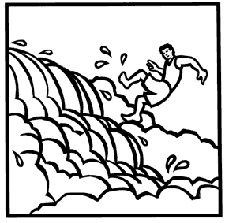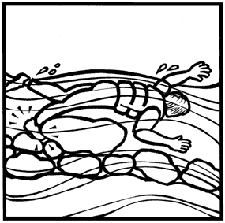
Don McGowan Photo Can I Recreate in Water in the Smokies?Water recreation is not recommended in Great Smoky Mountains National Park due to numerous hazards. Innumerable injuries have resulted from people swimming and riding inner tubes in park waters. Medical assistance for injured persons may be many hours away. Drowning is one of the leading causes of death in the park. Closely supervise children at all times. Why is it not safe to recreate in water in the Smokies?Every year serious water-related injuries occur in the park. These injuries can easily be avoided.
Stream Crossings on HikesDo not wade in or attempt to cross a rain-swollen stream. Hikers must use good judgment when deciding to cross streams. It is better to turn back or wait for flooding streams to recede than risk your life.How Can I Stay Safe Near Water?
Do not climb on rocks near waterfalls.Also use extreme caution when walking along riverbanks. Over the years, several people have fallen to their deaths and many others have suffered serious injuries from climbing on rocks near waterfalls or along the riverbanks. These rocks are slippery due to mist and algae. 
Do not dive or jump into the water.Submerged rocks, trees, or debris could be immediately below the surface of the water, even if you don't see it.
If you find yourself accidentally swimming in fast moving water, do not try to stand up.Most drownings result from getting a leg or ankle caught in an underwater rock ledge or between boulders. The force of the water will push you over and hold you under.
The standard defensive swimming position in fast water is lying on your back with your feet pointing downstream and toes up towards the surface.Always look downstream and be prepared to fend off rocks and debris with your feet. HypothermiaExposure to cold water can lead to hypothermia in minutes. It is an extremely dangerous condition involving the lowering of the body's "core" temperature. Hypothermia can kill you. Symptoms include loss of strength and muscular coordination followed by mental confusion and irrational behavior. Protect Park Streams
|
Last updated: April 9, 2025
